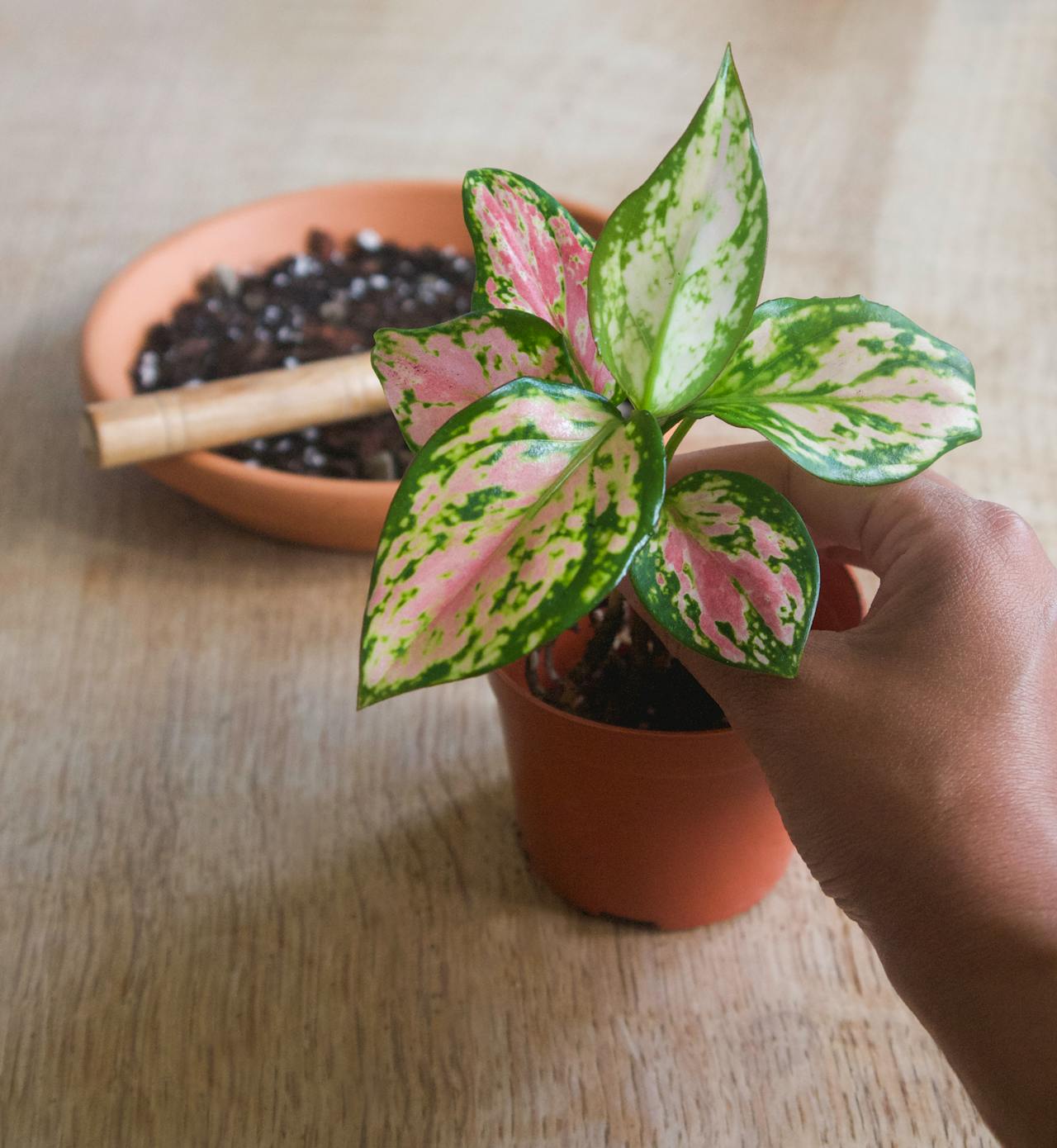Maintaining the vibrant beauty of your Aglaonema Pink (Aglaonema commutatum) throughout the year is easier than you might think. This stunning houseplant, known for its colorful variegated leaves, thrives with a little attention tailored to each season’s unique demands.
Whether you’re a seasoned plant enthusiast or a beginner, understanding the seasonal needs of your Aglaonema Pink ensures it remains a lush and lively centerpiece in your home. From spring’s rejuvenating growth to winter’s cozy dormancy, here’s your ultimate guide to keeping your Aglaonema Pink healthy and flourishing all year round.
1. Spring: Reviving and Promoting Growth

1. Increased Light Exposure Spring marks the transition from shorter days to longer ones. Move your Aglaonema Pink to a brighter location to take advantage of the increased natural light. While these plants prefer bright, indirect light, they can also tolerate lower light conditions. Ensure they are not exposed to direct sunlight, which can scorch their leaves.
2. Enhanced Watering As temperatures rise, Aglaonema Pink’s water needs increase. Water your plant more regularly, ensuring the top inch of soil dries out between waterings. Avoid overwatering by allowing excess water to drain freely from the pot.
3. Fertilization Spring is an ideal time to fertilize your Aglaonema Pink. Use a balanced, water-soluble fertilizer every 4-6 weeks to provide essential nutrients that support new growth and vibrant foliage.
4. Pruning and Cleaning Remove any yellow or damaged leaves to encourage healthy new growth. Gently wipe the leaves with a damp cloth to remove dust, enhancing photosynthesis and overall plant health.
Also Read- Using Aglaonema Pink To Enhance Your Balcony Garden
2. Summer: Maintaining Optimal Health

1. Adequate Humidity Summer can bring dry indoor air, especially with the use of air conditioning. Increase humidity around your Aglaonema Pink by misting the leaves regularly, placing a water tray nearby, or using a humidifier. Higher humidity levels help prevent leaf browning and maintain lush foliage.
2. Consistent Watering Continue to water your plant regularly, keeping the soil consistently moist but not soggy. Be mindful of the increased evaporation rates in summer, adjusting your watering schedule as needed.
3. Temperature Control Aglaonema Pink thrives in temperatures between 65°F to 80°F (18°C to 27°C). Keep your plant away from direct heat sources such as radiators, heaters, or hot windowsills, which can cause stress and damage to the leaves.
4. Pest Prevention Summer’s warm and humid conditions can attract pests like spider mites and aphids. Inspect your plant regularly for signs of infestation. Treat any pests promptly with natural remedies such as neem oil or insecticidal soap to keep your Aglaonema Pink healthy.
3. Autumn: Preparing for Cooler Months

1. Adjust Light Levels As daylight hours decrease, gradually move your Aglaonema Pink to a location with brighter indirect light to compensate for the shorter days. Avoid sudden changes in light exposure, which can stress the plant.
2. Reduce Watering Frequency With cooler temperatures and reduced light, Aglaonema Pink’s growth slows down. Decrease your watering frequency, allowing the top inch of soil to dry out between waterings. Be cautious not to let the soil become too dry.
3. Fertilization Cutback Autumn is a time to reduce fertilization as the plant prepares for dormancy. Fertilize your Aglaonema Pink no more than every 8-10 weeks, focusing on maintaining soil nutrient levels rather than promoting new growth.
4. Pruning and Cleaning Continue to remove any yellow or damaged leaves. Pruning helps maintain the plant’s shape and encourages healthier growth during the dormant season. Clean the leaves to ensure efficient photosynthesis with the available light.
4. Winter: Ensuring Survival and Minimal Growth

1. Optimal Light Exposure During winter, indoor lighting can be limited. Place your Aglaonema Pink near a window that receives ample indirect light. If natural light is insufficient, consider using a grow light to provide the necessary illumination for your plant’s health.
2. Minimal Watering Winter’s cooler temperatures and lower light levels mean your Aglaonema Pink requires less water. Water sparingly, allowing the soil to dry out between waterings. Overwatering during winter can lead to root rot and other issues.
3. Temperature Stability Maintain a stable indoor temperature, avoiding drafts from windows or doors and keeping the plant away from heating vents. Aglaonema Pink prefers temperatures between 60°F to 75°F (15°C to 24°C) during winter.
4. Humidity Management Indoor heating can dry out the air in winter, so it’s essential to maintain adequate humidity. Use a humidifier, mist the leaves, or place the pot on a tray filled with water and pebbles to keep the humidity levels around your Aglaonema Pink optimal.
5. Limited Fertilization Fertilize your Aglaonema Pink sparingly during winter, if at all. The plant’s growth slows down, and excessive fertilization can lead to nutrient buildup and potential root damage.
General Tips for Year-Round Care
- Proper Potting: Ensure your Aglaonema Pink is in a well-draining pot with appropriate soil. Repot every 2-3 years or when the plant outgrows its current container.
- Healthy Environment: Keep the plant away from direct drafts, extreme temperatures, and sudden changes in its environment to prevent stress and maintain overall health.
- Regular Monitoring: Consistently check for signs of stress, pests, or disease. Early detection and treatment are crucial for keeping your Aglaonema Pink thriving.
Conclusion
Caring for your Aglaonema Pink throughout the year involves understanding and adapting to the changing needs of the plant with each season. By providing the right light, water, humidity, and nutrients, you can ensure your Aglaonema Pink remains a beautiful and healthy addition to your home. Embrace these seasonal care tips to enjoy the vibrant foliage and air-purifying benefits of Aglaonema Pink all year round.













Leave a comment
This site is protected by hCaptcha and the hCaptcha Privacy Policy and Terms of Service apply.